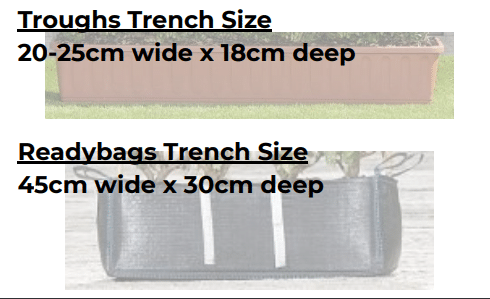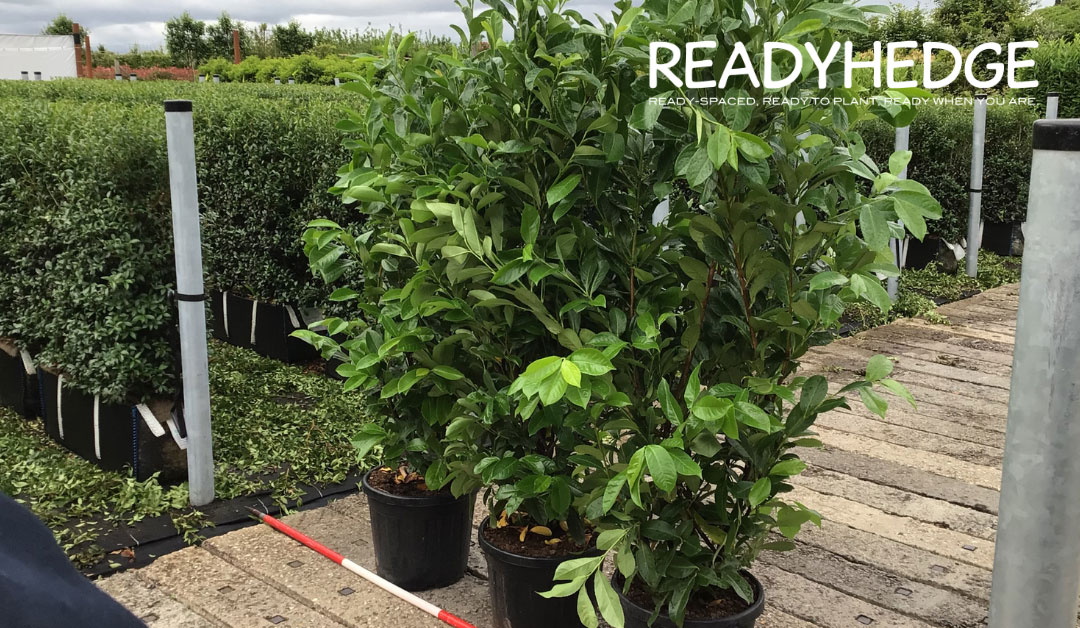The Laurel family is a highly popular choice for hedging in gardens across the UK. It is a superb hedging plant that offers different varieties and is both practical and aesthetically pleasing.
Laurel hedging ticks many boxes as it’s a versatile breed of hedging, available as compact, low-hedging to ready-grown screening. They are evergreen, meaning they will provide stunning colour and privacy all year round.
Additionally, Laurel is also very well adapted to growing in challenging environments, proving itself as a great contender for your choice of garden hedging.
Most Popular Laurel Hedging
The two most popular types of Laurel hedging would be the cherry and the Portuguese.
Cherry
The Cherry Laurel, also known as the common laurel, is a firm favourite. It’s a large hedge plant that has large, thick and glossy green leaves. Perfect for the ultimate garden privacy!
It is also a great hedge for reducing wind and noise pollution from the surrounding areas.
Portuguese
The Portuguese Laurel has rich, dark green leaves at the end of striking, deep red-pink stems. Compared with the Cherry Laurel, the leaves of the Portuguese Laurel are more pointed.
As an evergreen hedge, this species will hold its leaves and in the spring will develop small sprays of fragrant, white flowers and small red-purple berries later on in the year.
Benefits of Laurel Hedging
There are many benefits to Laurel Hedging, in fact it is one of the quickest growing evergreen hedges.
- Can be pruned or trimmed to desired height
- Can be cut back as hard as required – even right back to the stump
- It will re-grow quickly
- Ability to grow in most soil types
- Lots of varieties to choose from
- Great choice as a screening hedge
Instant Laurel Hedging
Both Cherry and Portuguese Laurels are available in ready-grow bags or troughs for instant planting. Enabling gardeners to have the perfect, mature hedge with a well-established root structure.
Once they are planted, they will give a healthy, complete hedge with a beautifully impressive impact.
They are available in heights between 80cm – 1.7m.
You can view our range of instant Laurel Hedging here.
Floral and Colourful Laurel Hedges
While they are known for their practicality, they are also chosen for their wonderful aesthetic appearance. They are perfect for creating emphasis and structure, bordering pathways and other garden features.
Varieties of Laurel that have interesting colours include:
- Portuguese Laurel – dark, glossy green leaves and dark red stems.
- Laurel Etna – bright green, glossy leaves that begin with a warm bronzed colour. It also has white flowers in spring and berries in the autumn.
Growing and Planting
One of the most important considerations when planting a hedge is the conditions of the soil and the surrounding environment.
That’s what makes Laurel Hedging a popular option, its hardiness and durability. All the Laurel species have the ability to grow adequately in poor soil conditions. They will also flourish in densely-shaded areas.
If the hedge has been grown in a container, then this will be suitable for planting at any time of year, however, those planted in the growing season (March – October) will need to be watered more than those planted at any other time of the year.
How to plant
Start by clearing the area, removing weeds, grass and other plants. If you need to add weed killer, do this a minimum of 2 weeks before planting your hedge.
Then it’s time to dig your hole using the guides below.

You can download our full planting guide here.
Frequently Asked Questions about Laurel Hedging
When should I prune my Laurel Hedge?
You should trim your edge in late spring or early summer. Use secateurs if the hedge is small or a hedge trimmer on a larger hedge. Make sure not to prune your hedge during hot or dry periods.
How often should it be pruned?
Twice a year.
What can I do if my hedge is overgrown?
Prune it back in late spring or early summer but only prune back hard if the soil isn’t too dry. You can cut it back to the stump and it will still re-shoot.
To shop our range of Laurel Hedging, click here. If you have any questions, contact our team today and we will be happy to assist you.

